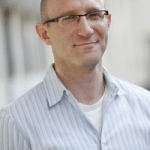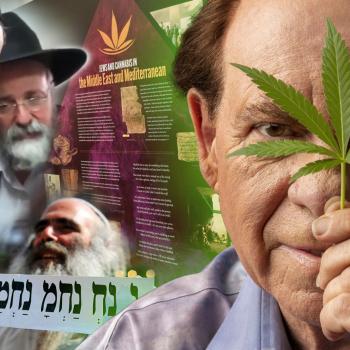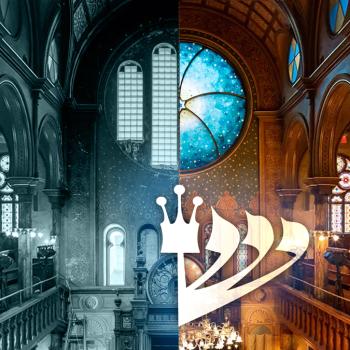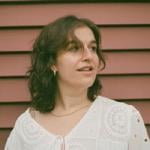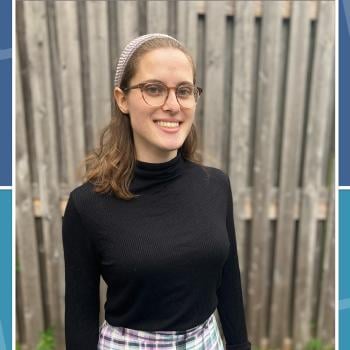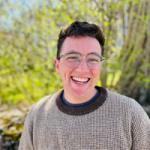By Alyssa Coffey, Hebrew College Rabbinical School student
Ki Tavo Deut. 26:1-29:8
A passage in the middle of parashat Ki Tavo describes a curious ritual: upon entering the promised land, the Israelites are to set up large stones, coated in plaster. On the stones, they are instructed to write “all the words of this instruction.” In only a few verses, we read two references to the all-encompassing nature of these words:
“On the day that you cross the Jordan River into the land that the Lord your G-d is giving you, you shall erect large stones. Coat them in plaster and inscribe upon them all the words of this Teaching (et kol divrei ha-Torah ha-zot)… And on these stones, you shall inscribe every word of this Instruction (et kol divrei ha-Torah ha-zot) most distinctly” (Devarim 27:2-3, 8).
A straightforward question emerges: What is the “Instruction” (Torah) of which these verses speak? Could it mean the entire Torah? The 10 Commandments, perhaps on a larger-scale and more public set of stones? (Why doesn’t the Torah specify how many stones the Israelites should plan to use for this project?) Do these words refer to only the teachings which Moshe and the Israelites’ other leaders are about to enumerate in the verses to follow?
Another question bubbles beneath the surface, begging to be investigated. What does it mean for these words to be written “most distinctly” – ba’er heitev (27:8)?.
The Hebrew phrase is a bit clumsy, translated variantly as “explained properly” or “very clearly.” While the root meaning of ba’er is to explain or clarify, heitev comes from the more familiar “tov,” for “good”: just as the Instruction/Teaching/Torah to be set upon these stones must be comprehensive, so too must the written text be broadly accessible. Merely to explain to one person is not enough, nor is it sufficient to ensure the words are legible for only a select few.
Quoting other rabbinic citations and interpretations, Rashi writes that “ba’er heitev” means that the Torah in question was intended to be written in 70 languages – a euphemism for all the languages of the world. (The same idea is found in reverse in the teaching that the Torah has ”70 Faces.” In both language and interpretation, the Torah reveals multiple explanations and possibilities — an idea which inspires the title of this blog.)
As we near the end of the book of Deuteronomy and the current calendar year, it is no accident that our tradition emphasizes broad access to traditional texts and teachings. On the other hand, Ibn Ezra, a medieval commentator with a greater focus on grammar, argues that “ba’er hetiv” refers to the physical writing itself. In Ibn Ezra’s view, the Instructions’ most notable quality is their exemplary penmanship or engraving.
To complicate matters, there is an interesting linguistic twist in this phrase: “ba’er” is used here as a verb to connote clarity or straight-forwardness. Spelled with the same consonants, albeit with different vocalization, this word appears elsewhere as a noun meaning “well” – a place from which water is drawn. While surely not a literal reading, we would do a disservice by ignoring the midrashic potential of this textual ambiguity.
The shimmery surface of a well (or any pool of clear, fresh water), permits both a view into its inner depths as well as a view of one’s own reflection. By this conception, these teachings – and our/the Torah in general – can both reveal new details and reflect or challenge our own perspectives and assumptions. As a ‘well,’ these teachings are multi-faceted and multi-purpose: perhaps they can quench our thirst, cool our fevers, help to clean our stains and spills. Perhaps these teachings, like a well dug deep, can be a renewable resource.
In a time of year where we transition into the High Holiday Season, may our learning and teshuvah be both nourishing and reflective: may we gain strength from it, and may we see glimpses of the sacred in it.
Alyssa Coffey (she/her) is a rabbinical student at Hebrew College, where she also serves as Editor of the 70 Faces of Torah blog. Prior to rabbinical school, she studied religion and history at Hampshire College, worked at a Jewish social service organization in Chicago, and spent two years studying in Jerusalem at Pardes. When not learning Torah, Alyssa is often knitting, spinning yarn, or solving puzzles.



